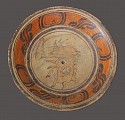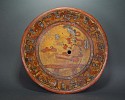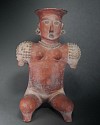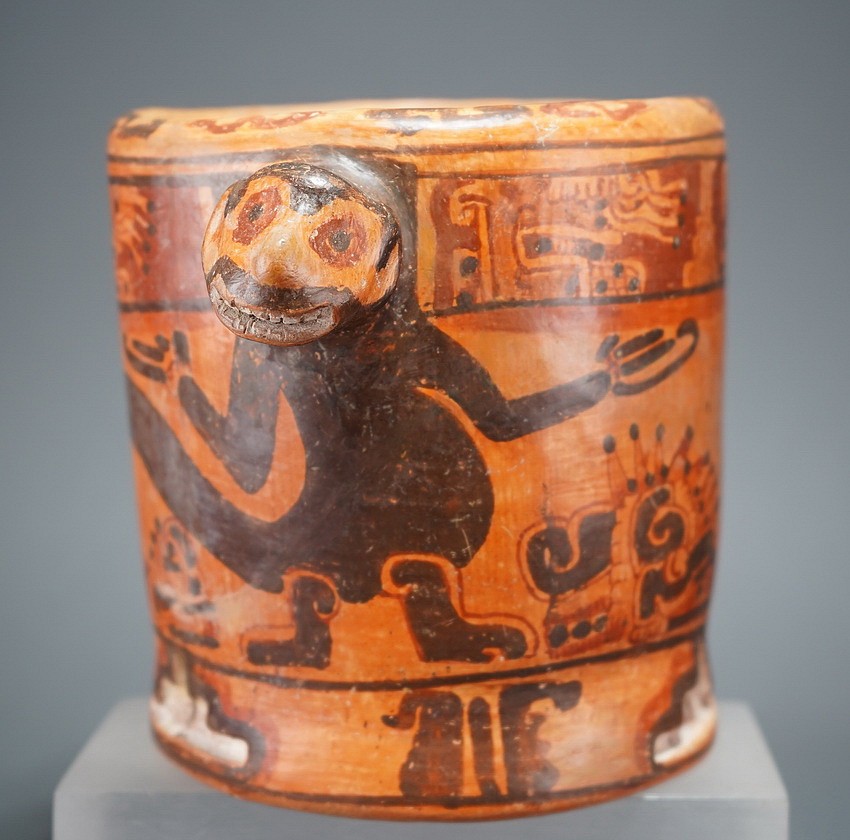

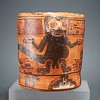
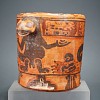

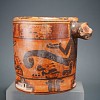

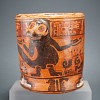
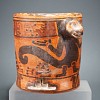




Honduras, Mayan Ulua Valley Ceramic Vessel with Protruding Monkey Head Handles
This is an excellent example of a painted Mayan ceramic vessel from Honduras, Late Phase. It is decorated with two bold monkeys with large tails. There is a band of glyphs around the top edge of the vessel, and glyphs separating the monkeys below. The monkeys' heads are cleverly sculpted in three dimensions to form the handles. The bottom of the vase is painted to resemble a classic Ulua Valley marble vase. This the finest known example of a Mayan vase depicting a monkey from the Mayan region of Honduras. A similar vase is illustrated in the Mayavase.com website, reference number 5668. Formerly in the Eisenberg estate in CT, prior 1980.
Period: Honduras, Late Classic Maya, c. AD 700 - 900
Media: Ceramic
Dimensions: Height: 5 3/4" (14.6cm) x Diameter: 4 7/8 (12.5cm)
Price Upon Request
P3050
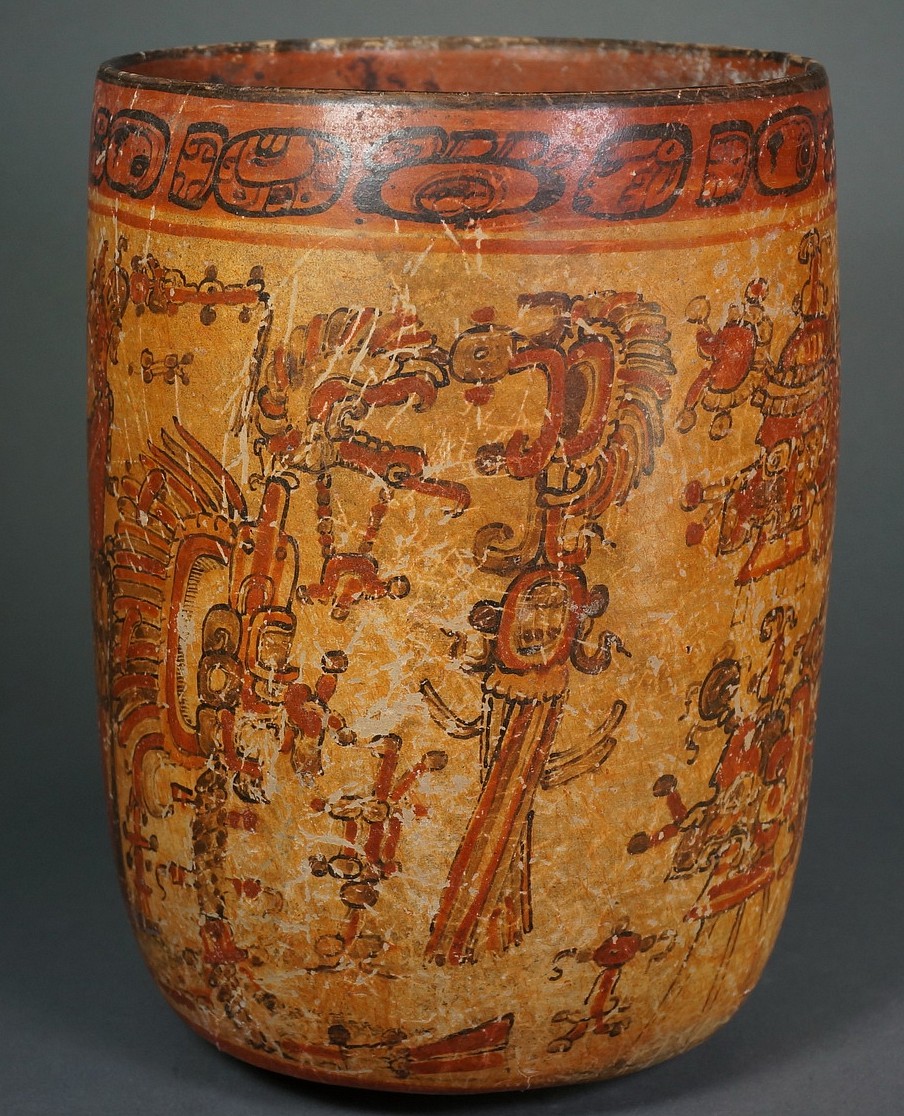







Guatemala, Mayan Tepeu 1 Style Mayan Painted Cylinder With Complex Palace Theme
This Tepeu 1 Style cylindrical vessel features complex iconography and a hieroglyphic inscription under the rim. There are two young, idealized male lords who likely represent Maize gods, as well as isolated floating motifs which are common in Mayan art. Deity heads with long snouts appear in front of the lords, possibly representing headdresses or possibly representing actual deities. The sets of three lines at the bottoms may represent stands or tripods for the masks. This vessel was reported on by Dr. Nicholas Hellmuth and exhibited at the MIHO Museum in Osaka in July of 2011. See Hellmuth's Late Classic (Tepeu 2) Vases: Throne Scenes essay for reference. Vases with Hieroglyphic Inscriptions Formerly in the collection of Hiroshi Miura, Tokyo, Japan, prior to 1969.
Period: Guatemala, El Peten Mayan, c. AD 650- 950
Media: Ceramic
Dimensions: Height: 7 1/2" x Diameter: 5 1/4" inches
$12,500
N5026
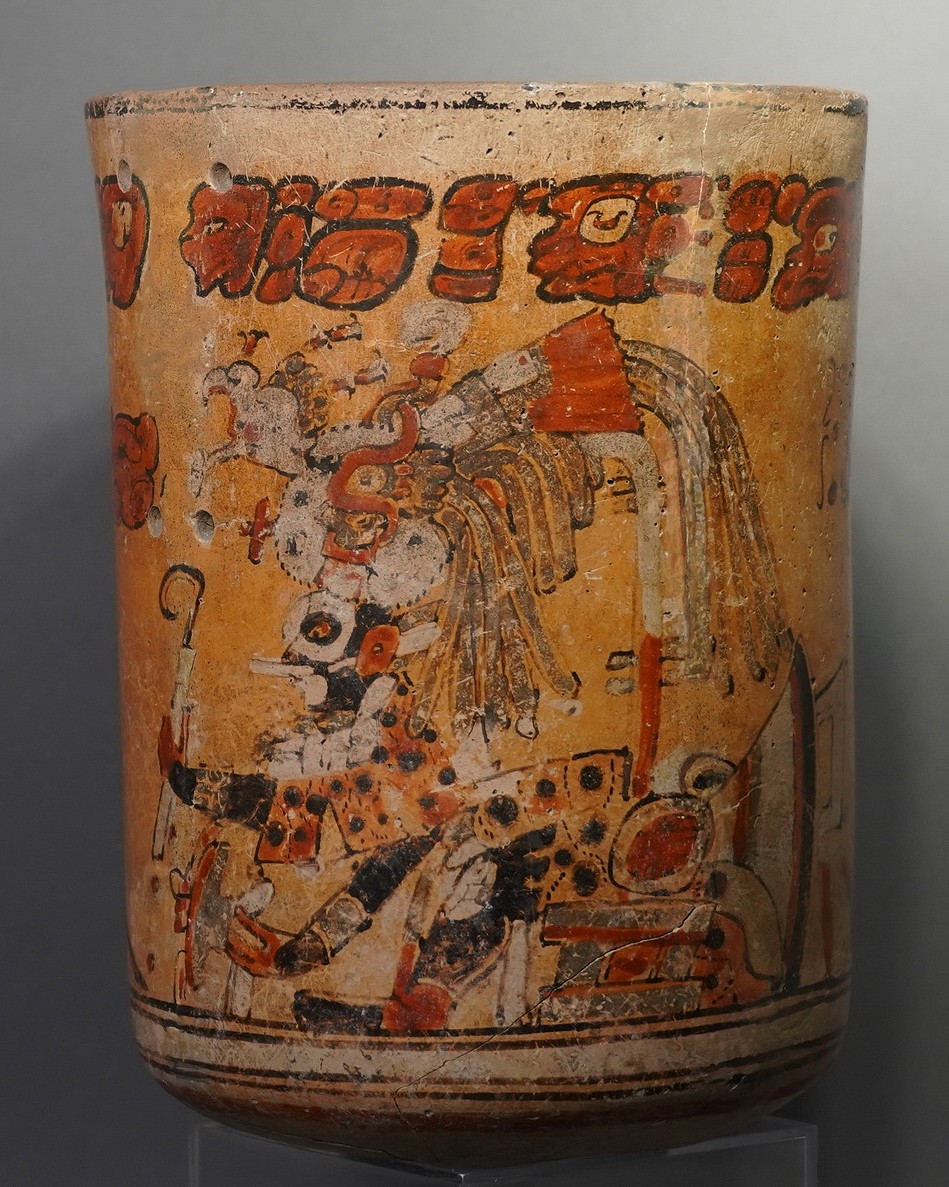






Guatemala, Mayan Polychrome Ceramic Cylinder Vessel with Ruler and Otherworld Serpent Deity
This compelling Mayan painted cylinder depicts a ruler, or cacique, enthroned in the jaws of the Serpent Deity from the otherworld. The top register of the vessel contains the Primary Standard Sequence - a sequence of characters identified by scholar Michael Coe in The Maya Scribe and His World in 1973. These glyphs are repeated in a similar formation on many vessels and are thought to be associated with Mayan myth and ritual. The Mayans believed that human souls were required as a sacrifice to propel the eternal wheel of cosmic order, and that the sacrificed souls would live beyond the death of the body. Fierce anthropomorphized serpent figures, such as the one depicted here, were employed by the Mayans to represent the archetypal forces of death and sacrifice.
Scholar Justin Kerr (mayavase.com) lists this cylinder as being affiliated with the term Och Chan Yopat, which means "the storm god enters the sky." This phrase is also found on a Mayan frieze that in Guatamala, described by Rachel Newer in The Smithsonian Magazine on August 9, 2013. This phrase describes the terrible, formidable nature of the cacique as well as the serpent god. The vase is painted in broad, sweeping lines of motion, using vibrant red blocks and aggressive black lines that weave in and out and morph from curving to linear. Acquired in Tokyo, Japan, prior to 1970.
Kerr database #K937 (mayavase.com).
Period: Guatamala, Mayan, c. AD 400 - 800
Media: Ceramic
Dimensions: Height: 7 7/8" x Diameter: 5 3/4"
Price Upon Request
N5022
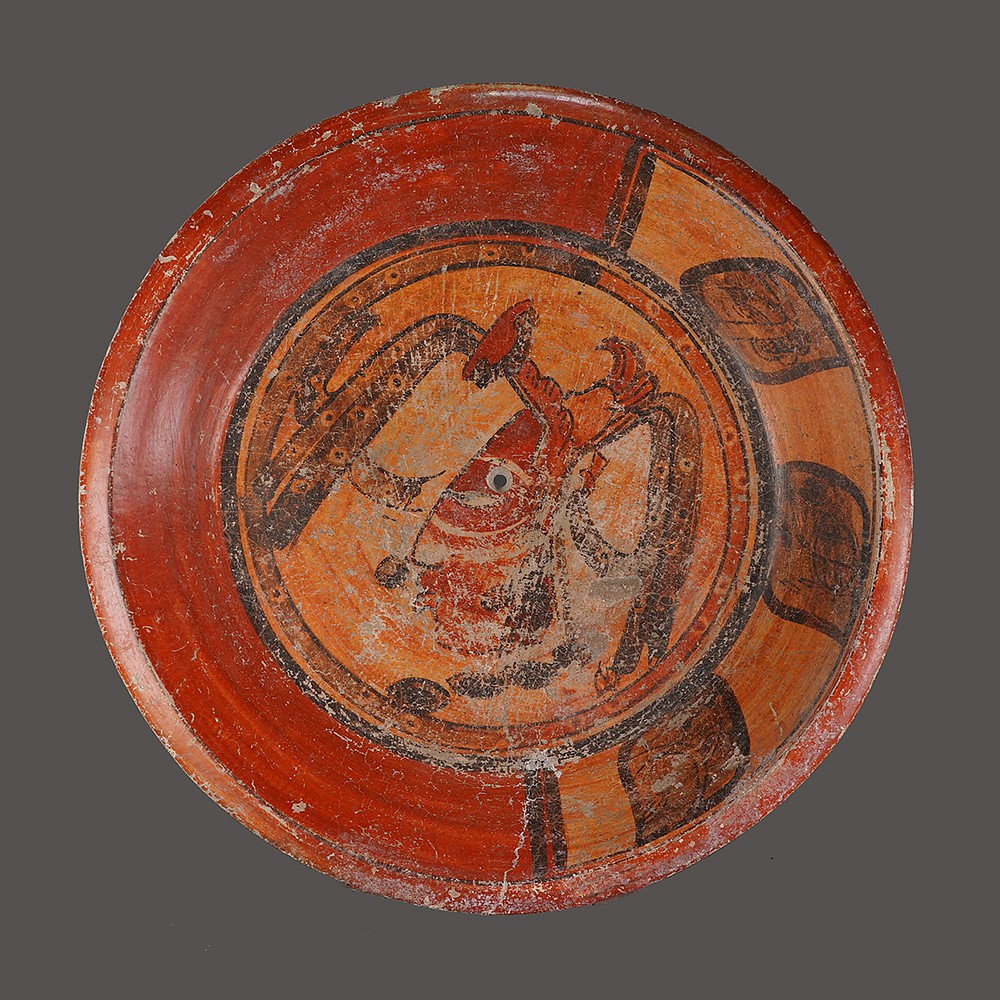
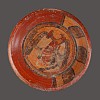


Guatemala, Mayan Ceramic Tripod Plate with Profile of a The Maize God Hun Hunaphu
The glyphs on this plate translate to LORD and the figure depicted is the Maize god Hun Hun Hunaphu. He is the father of the Hero Twins as told in the Maya creation myth, Popol Vuh. He can be identified by the extreme sloping forehead and tuft of hair on top of his head. He also wears a necklace with a pendant and elaborate ear ornaments. This plate has a "kill hole" above the eye, which was in the center of the plate. The plate was likely used to serve corn dumplings at a Mayan ritual feast. Private collection, acquired in Tokyo, Japan, prior to 1970.
Period: Guatemala, Late Classic Maya, Petan, c. AD 600 - 800
Media: Ceramic
Dimensions: Diameter: 12" (30.5 cm) x Height: 3"(8 cm)
Price Upon Request
n6014
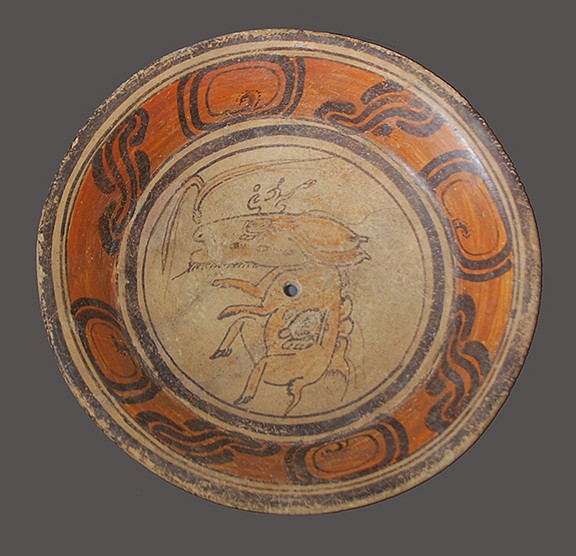



Guatemala, Mayan Ceramic Plate with Capybera and Glyphs
This beautiful plate features a Capybera, a giant rodent with an unusual large rectangular head that is native to South America. Cabyberas are highly social animals that inhabit dense forest areas and were hunted by the ancients as a meat source. There is a kill hole in the center of the plate above a glyph on the animal.
Period: Guatemala, Late Classic Maya, c. AD 550 - 950
Media: Ceramic
Price Upon Request
N6013
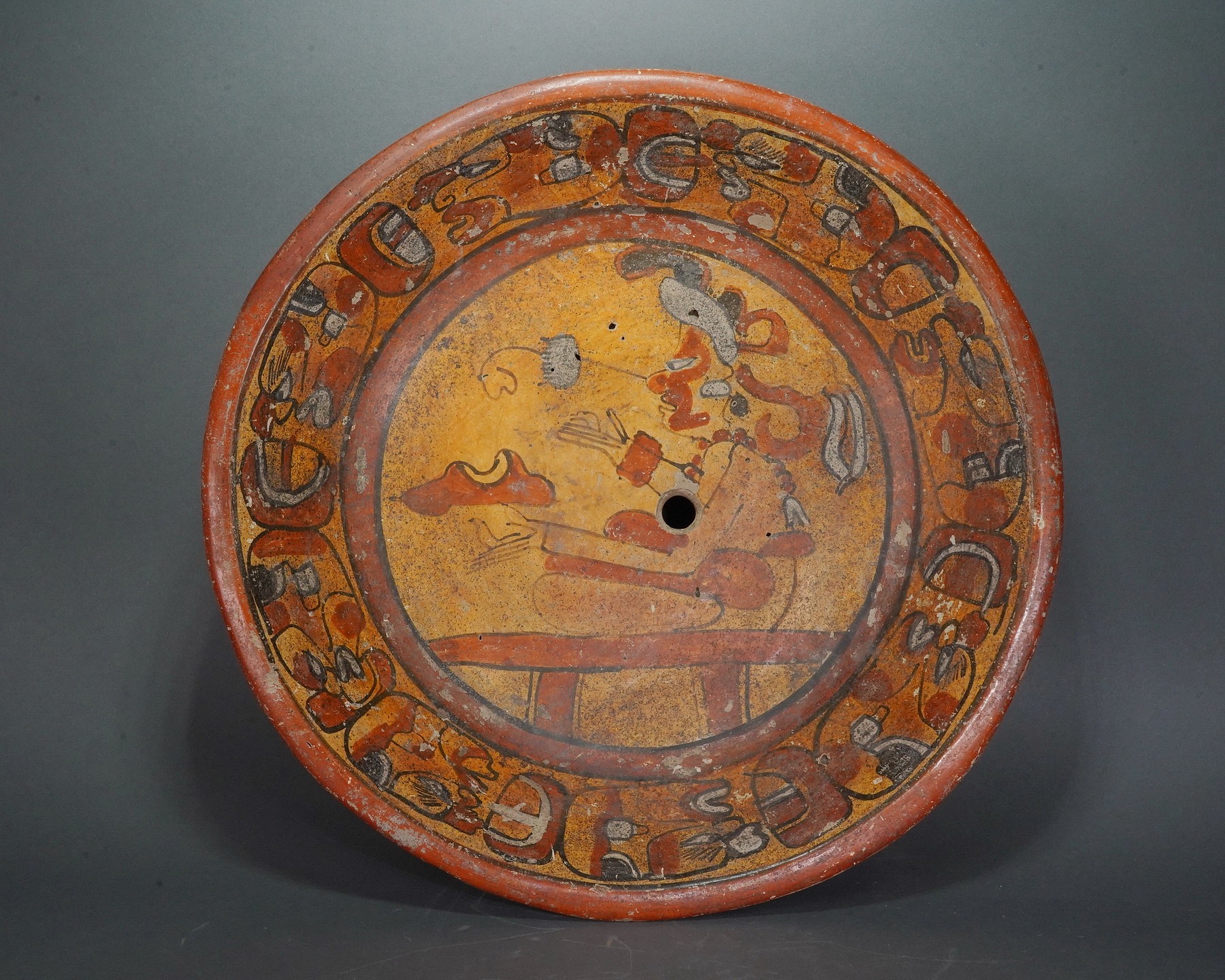






Guatemala, Mayan Tripod Dish with Seated Figure
This painted Mayan tripod dish features eight repeating glyphs of deity heads in profile painted around the inside edge. The central seated figure is likelay shaman. He is holding two birds, which represent communication. There is a "kill hole" in the center of the dish. The back of the dish is painted with scallop design. Formelry in the collection of Hiroshi Muira, Tokyo, Japan, prior to 1980.
Media: Ceramic
Dimensions: Diameter: 11" X Height: 3 1/2"
Price Upon Request
n6012B
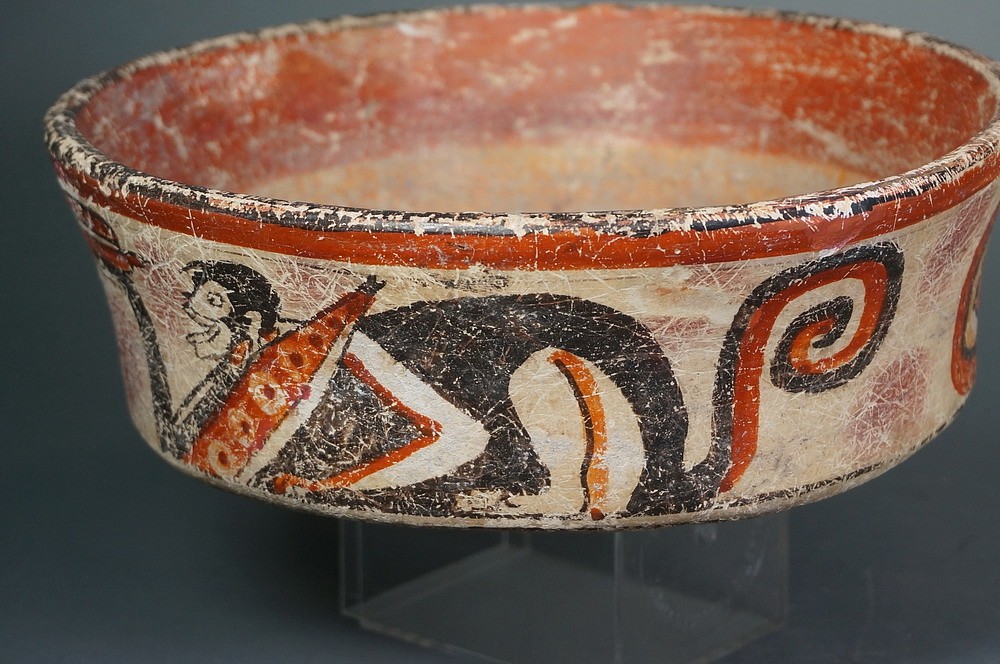





Guatemala, Mayan High Walled Dish with Repeating Monkey Motif
This dish features a repeating scene of monkey serving a dish featuring a cacao pod with seeds, followed by a glyph with the sound of O. It is likely that the monkey is serving a chocolate dish; chocolate was revered by the Mayans as a life-giving substance. The bottom is attractively painted with a typical Mayan brush design.
Period: Guatemala, Late Classic Maya, Petan, c. AD 500-510
Media: Ceramic
Dimensions: Height: 2.5" x Diameter: 7.25"
$6,000
n5050
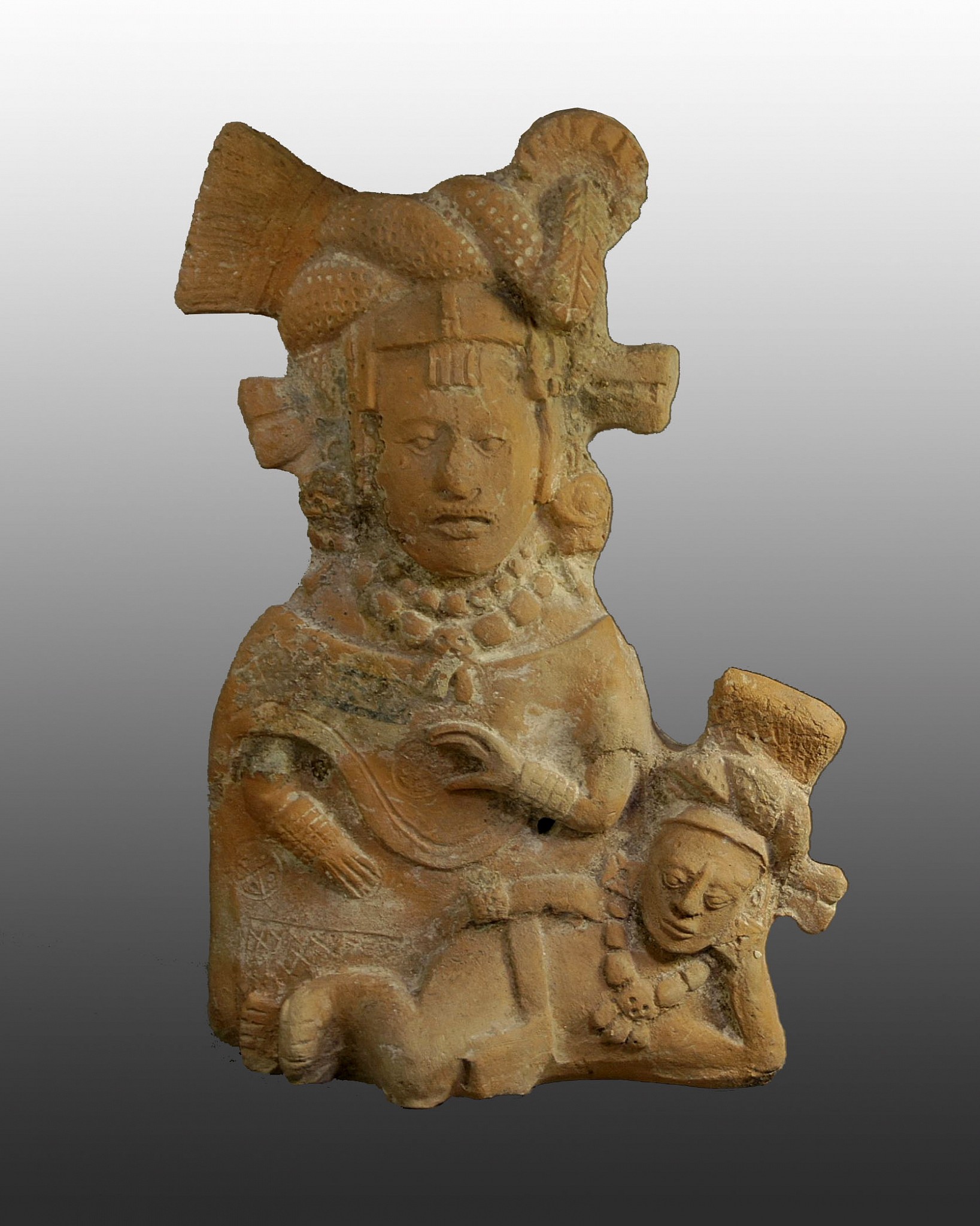





Mexico, Mayan Ceramic Figural Rattle of A Female Figure with Child
This high-ranking noble Jaina female wears a cloth and feather turban, ear spools, a heavy beaded collar piece and a slip-on quexquemitl over a skirt decorated with roundels and cross-hatching around the hem. Her face has a discreet scarification pattern in the center of the forehead and around the upper lip. The male child lying at her feet has a similar turban, beaded necklace, and a simple loincloth. Jaina-style figurines were exchanged along a 500 mile trade route. These figurines were hand-modeled with hollow, mold-made bodies, and joined to plain backs made by hand or molded. This figure can function as a whistle, flute, or rattle. For the Maya, enabling figurines to make sound animated them with the essence of life: air.
Period: Mexico, Jaina, Jaina Island, c. AD 400 - 700
Media: Ceramic
Dimensions: Height: 8 1/2"
Price Upon Request
N6011
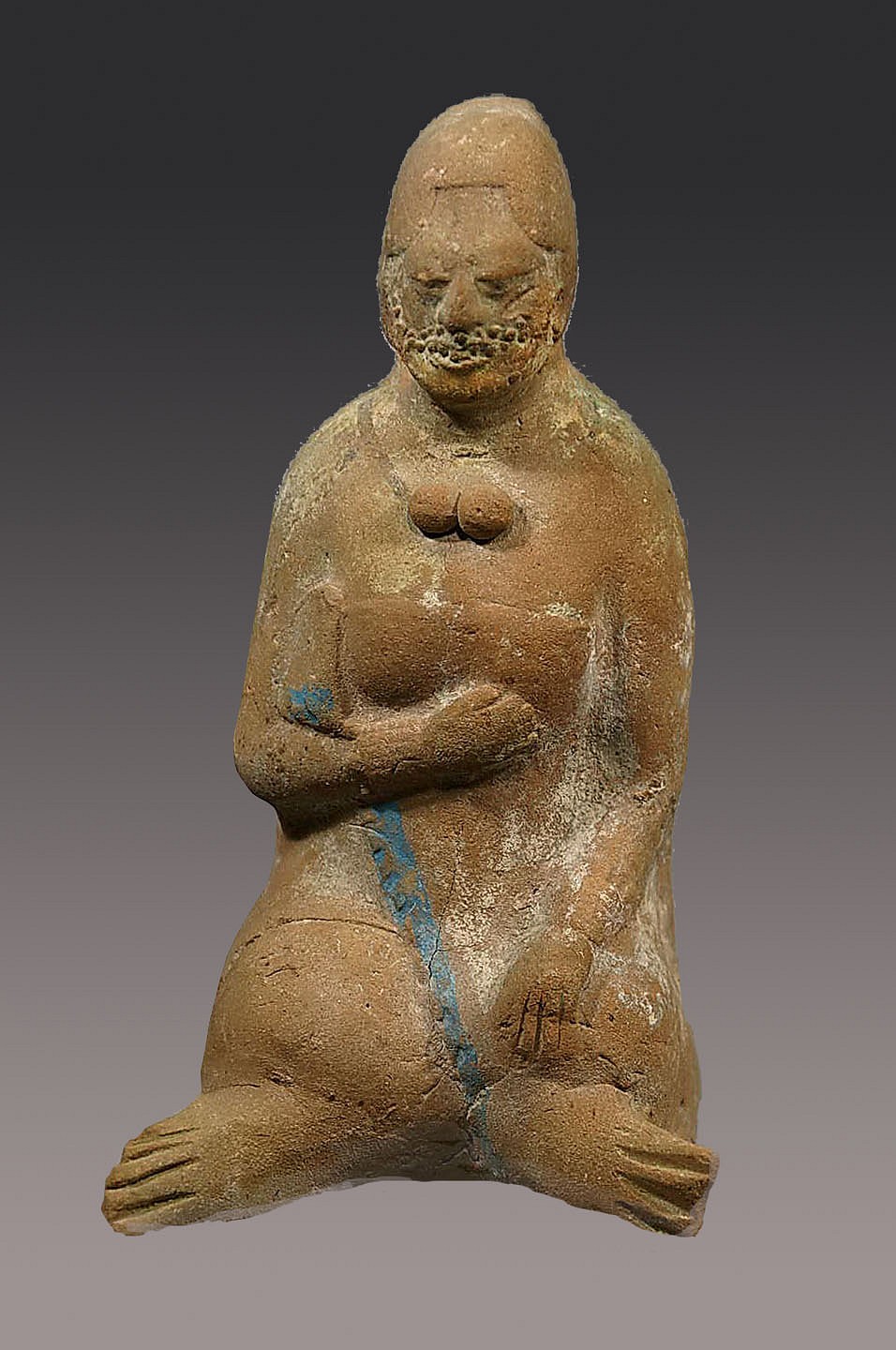



Mexico, Jaina Ceramic Efiigy Whistle of a Seated Woman
This cast ceramic whistle depicts a lady with a tattooed face, holding her hand to her breast. Post-fire blue pigment outlines the edge of her huipil, which was knotted on the upper right side of her chest.
Mold-cast figurines are thought to be later than solid hand modeled examples. Jaina Island, off the coast of Yucatan, was used as a cemetery for high-ranking nobles from the mainland.
Period: Mexico, Classic Maya, c. AD 400 - 800
Media: Ceramic
Dimensions: Height: 7"
Condition: With a minor chip on the right foot.
Price Upon Request
88167
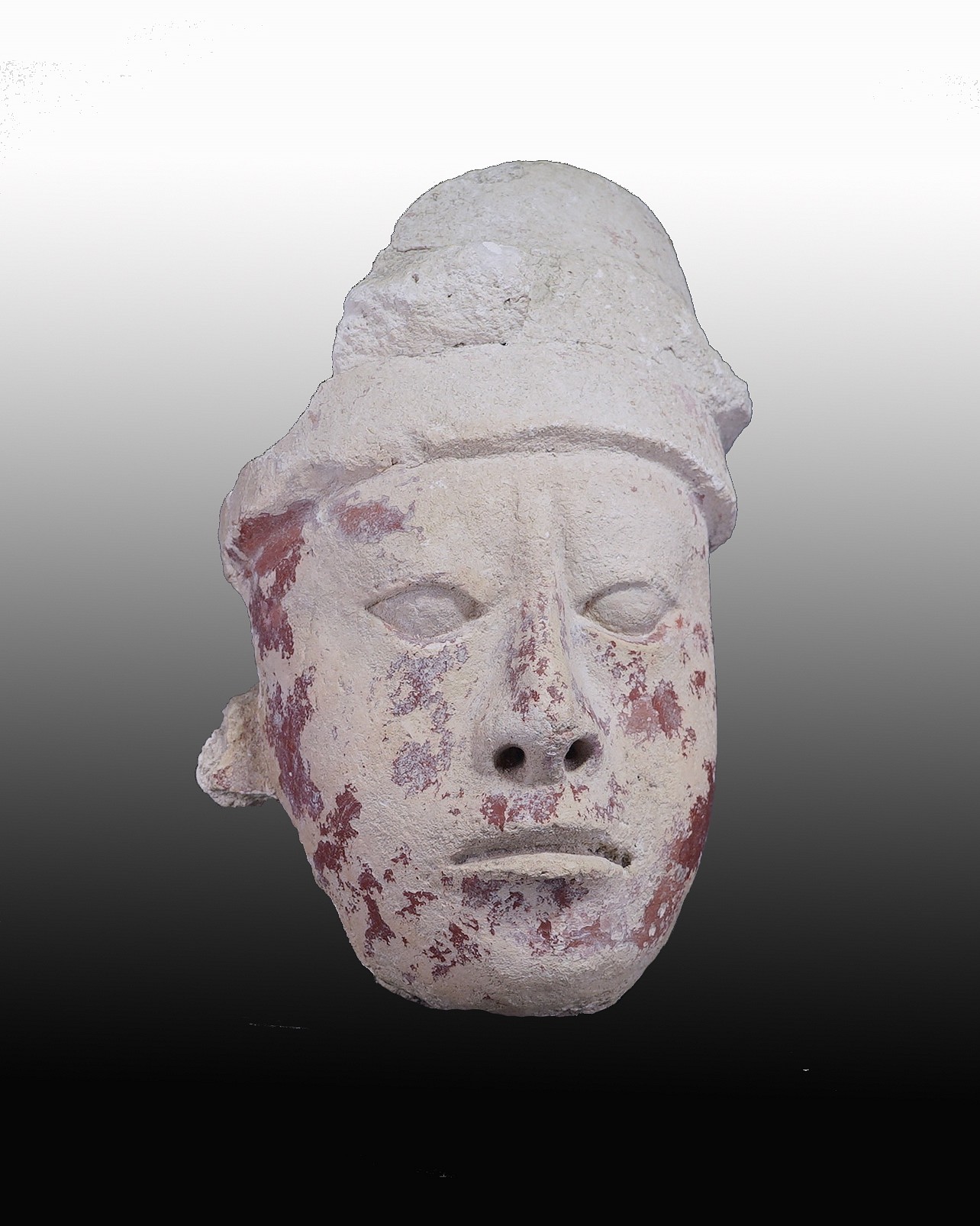



Mexico, Mayan Stucco Face of a Ruler
This Mayan ruler wears stone headdress and has carefully crafted facial features. It originates from Chiaps, Mexico, and was formerly in the collection of Hiroshi Miura in Tokyo, Japan, prior to 1970.
Period: Mexico, Mayan, Jaina, Late Classic, c. AD 550 - 950
Media: Stone
Dimensions: Height: 11 1/2 x Width: 7" Depth: 6 1/2"
Price Upon Request
n3046
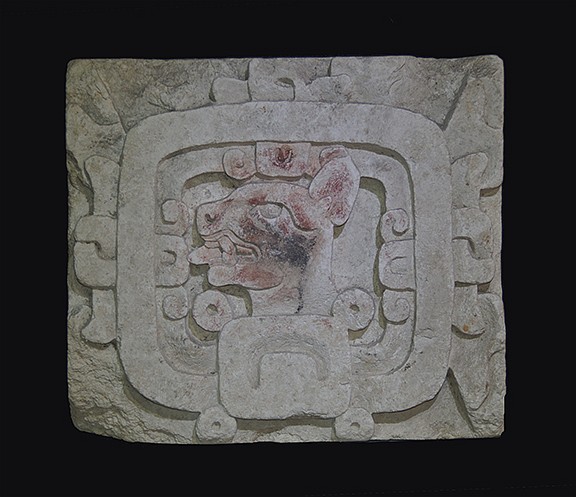



Mexico, Mayan Carved Limestone Relief of a Jaguar in Profile
This relief carved Mayan limestone tablet features a jaguar carved in profile with original red pigment, resembling a famous Mixtec stone stela with warriors wearing similar jaguar face masks. The tablet was exhibited in Tokyo in the Museum of Tobacco and Salt’s Animal Designs in Ancient America in February 2002 and was formerly in the collection of Hana Gallery in Tokyo prior to 1970.
Period: Mexico, Northern Veracruz, Toltec/Mixtec, circa AD.1000- 1200
Media: Stone
Dimensions: Height: 13 1/4" x Width: 15" Depth: 5 1/4"
Weight: 45 lbs
Price Upon Request
n3047
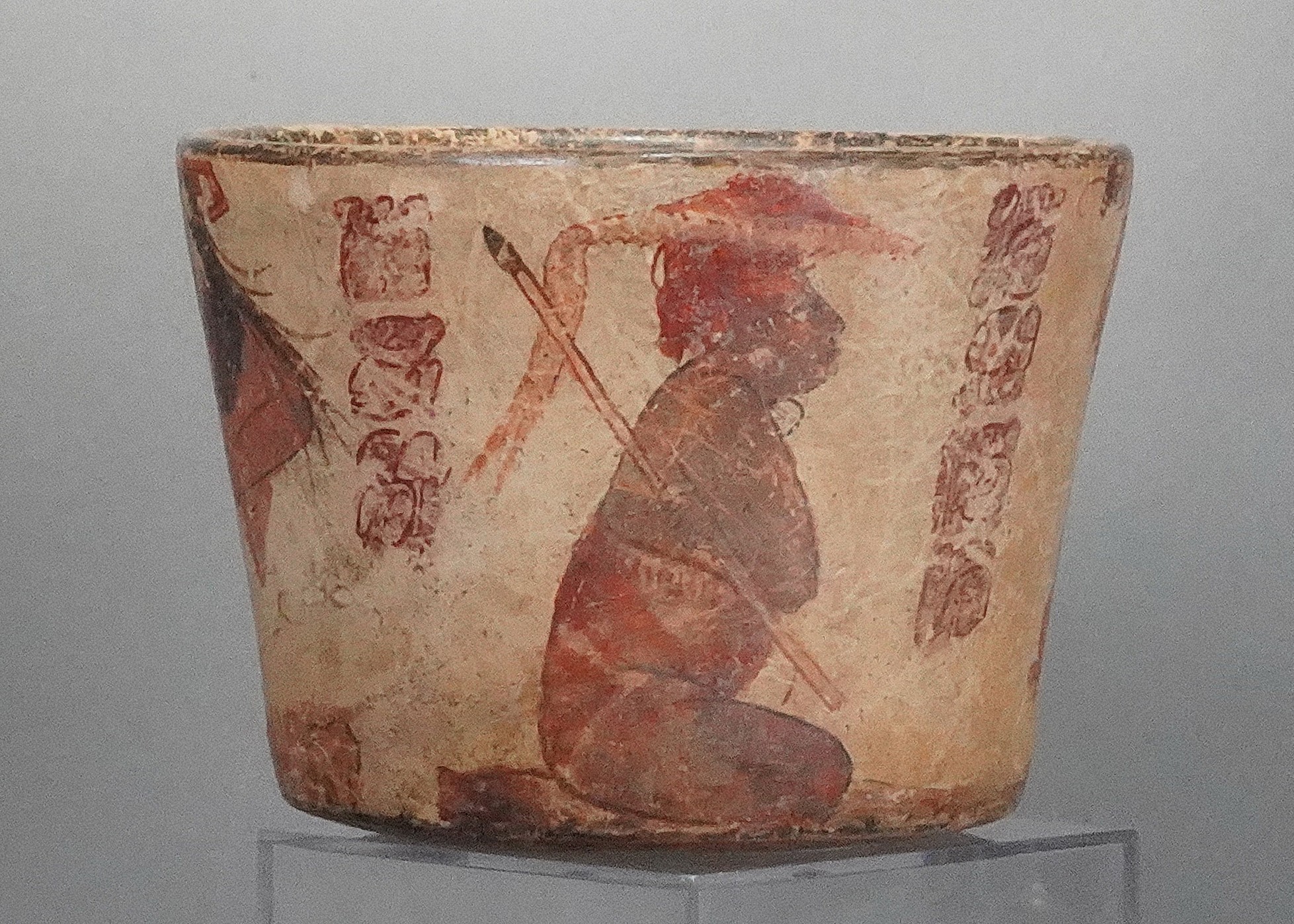





Guatemala, Mayan Polychrome Dish with Two Priests in the Motul de San Jose Style
This painted ceramic dish depicts two scenes. The first scene features two seated figures facing each other, separated by three glyphs. In this scene, the figure at right holds a staff and wears an elaborate headdress, while the figure at left wears a jaguar kilt and is making a gesture of resignation. The second scene depicts three figures, including a surrendering prisoner presenting himself to his captor, who is joined by a member of his entourage. Bishop Diego de Landa, c. 1524 - 1579, described the trope of captors and prisoners in Mayan art, referring to the “sign of resignation or humility before a conqueror or superior person.†This vessel also depicts a shaman wearing a black mask, who appears to be painting the glyphs and narrating the story. The glyphs on both sides of the vessel likely provide the names of the characters in the story.
This vessel was acquired from Gallery Hana in Tokyo, Japan, prior to 1970.
Period: Guatemala, Mayan, Petan, Late Classic c. AD 700 - 800
Media: Ceramic
Dimensions: Height: 4"
Price Upon Request
n5025
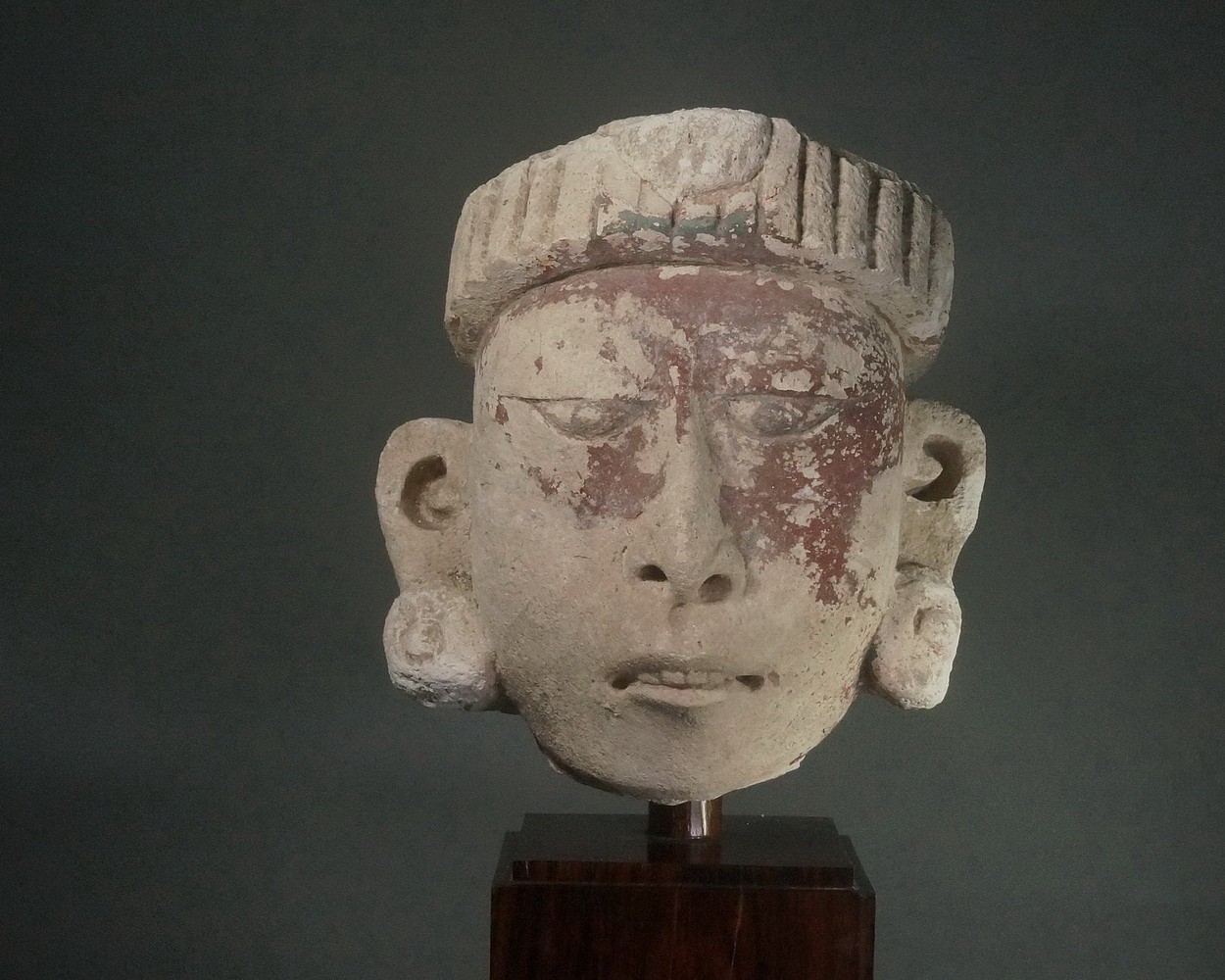





Mexico, Early Post-Classic Mayan Stucco Head Depicting a Priest
The priest’s eyes are looking down as if the head was placed high up on a wall.
Ex. collection Hana Gallery, Tokyo, prior to 1970.
Period: Mexico, Maya, c. AD 750 - 800
Media: Stone
Dimensions: Height: 10" x Width: 8 1/2" Depth 7 1/2"
Price Upon Request
n3045
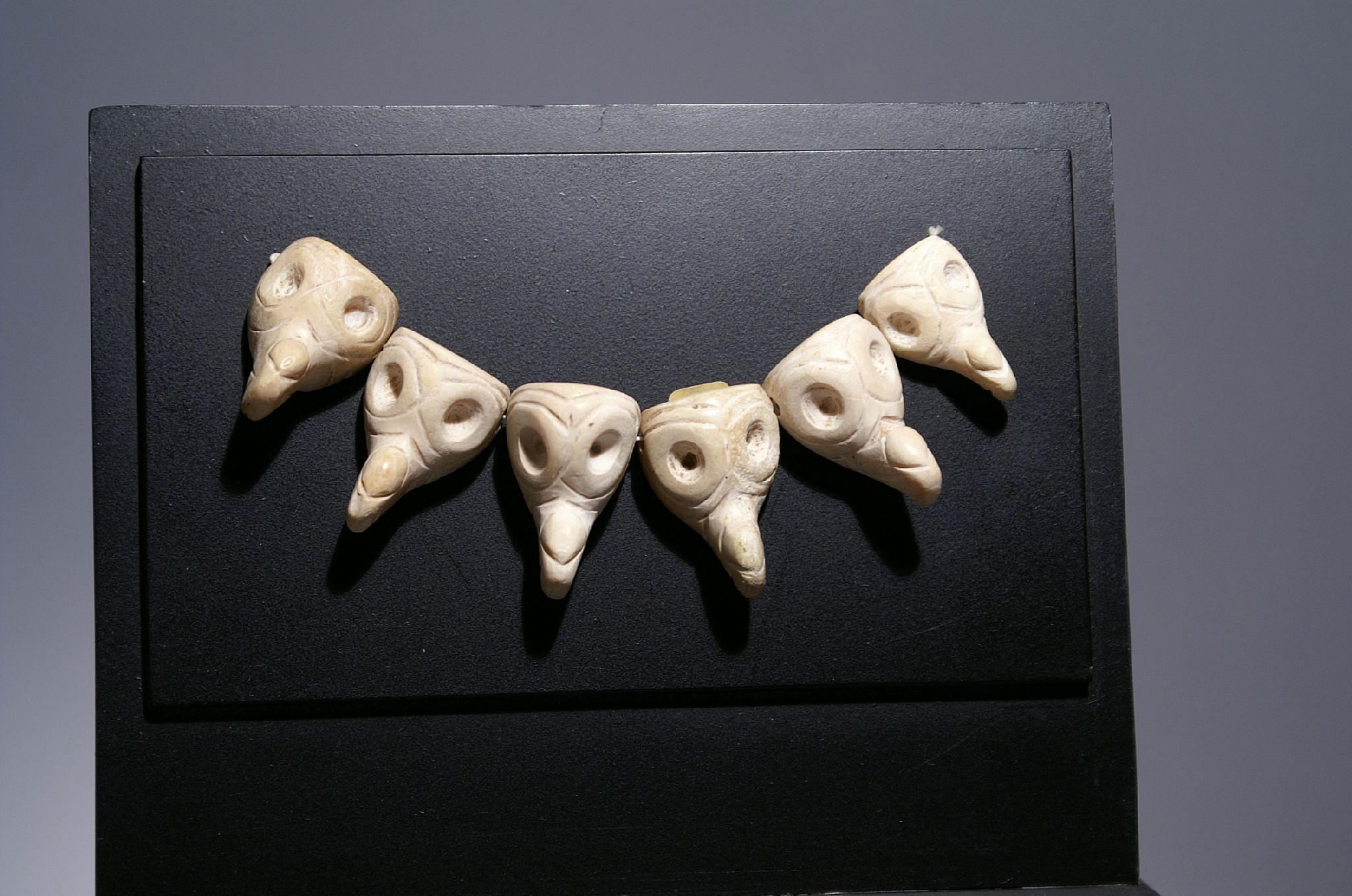


Mexico, Six Huastec Carved Shells in the Form of Condor Heads
These raptorial bird heads were clearly a part of the same original necklace. The bird may represent the condor, an endangered species in Mexico, or another powerful raptor that had mythological significance. Each shell head was drilled in the back with two conical drill holes. Colorado collector prior to 1997.
Period: Mexico, Huastec, Veracruz, c. AD 900 - 1500
Media: Shell
Dimensions: Length 4 1/2" Each head Length: 1"
Price Upon Request
97162
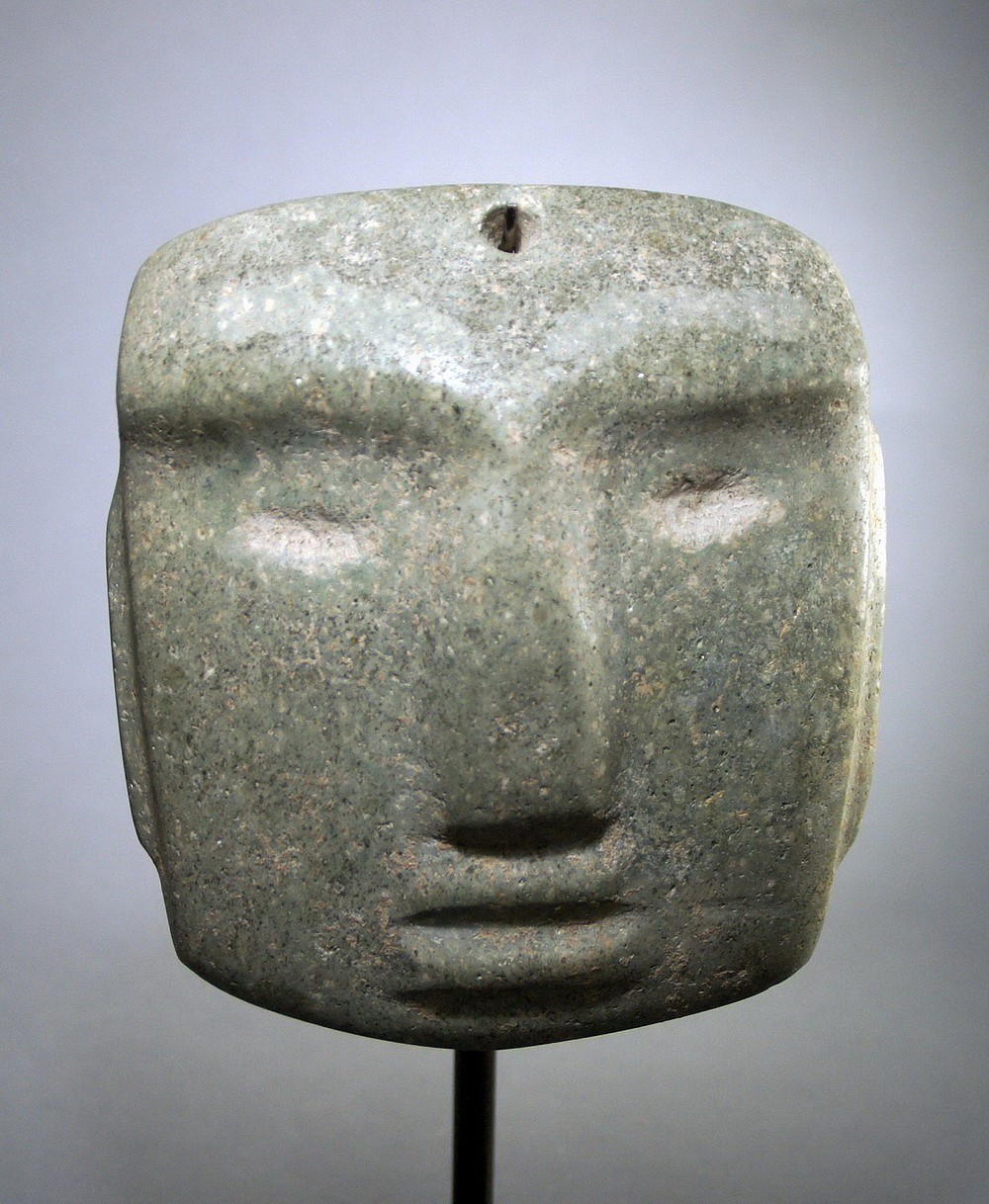







Mexico, Chontal Green Stone Mask with eyebrows
Classic Chontal style mask with unusual depiction of the eyebrows, which are etched into the stone. Similar masks are illustrated in CHONTAL: ANCIENT STONE SCULPTURE FROM GUERRERO MEXICO, page 59, A, B, C. & page 60. There are strong root marks all over.
Period: Mexico, Chontal middle phase, Guerrero, c. 500 - 100 BC
Media: Stone
Dimensions: Width: 6 1/4" x Height 7"
$12,000
N5021
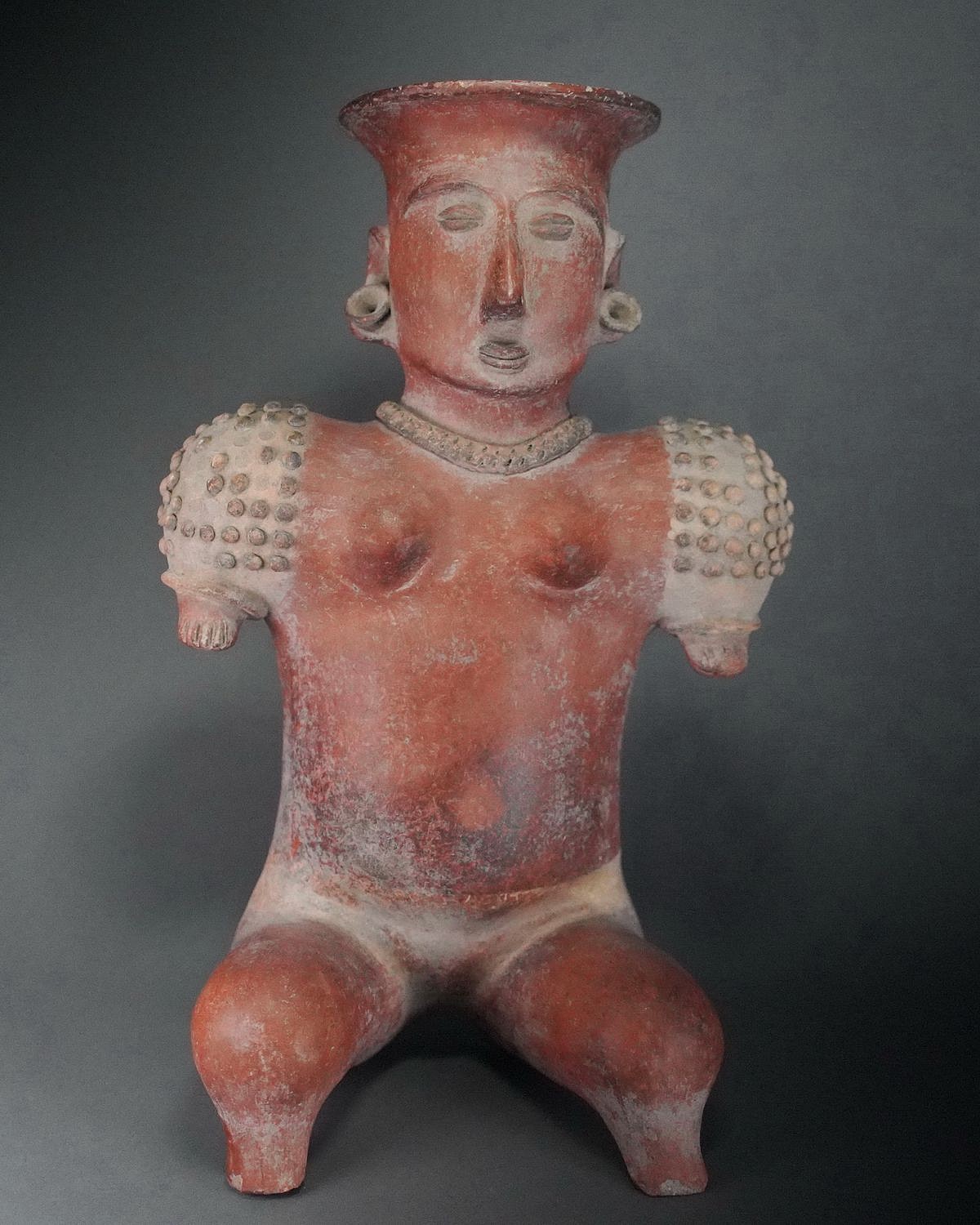




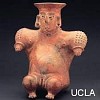

Mexico, Colima Seated Ceramic Sculpture of a Female
This seated female wears a necklace and earspools. She is adorned with shoulder pellets and has short arms that end with stubs in place of hands. The pellets may represent armor intended as protection for a person with short arms. Female figures in Pre-Columbia may have been linked to concepts of the earth and fertility and are thought to represent initiated women ready for marriage and childbirth. Usually, these figures appear to be disengaged from daily life. Similar style Coahuanyana Valley figures are in the collection of the Fowler Museum at UCLA, and The Arizona State Museum of Natural History. Ex-collection Hiroshi Miura, Tokyo, Japan acquired prior to 1970's.
Period: Mexico, Colima, Coahuanyana Valley, Classic Period, c. 100 BC - AD 400
Media: Ceramic
Dimensions: Height: 15.5"(38cm) x Width: 10"(22cm)
Price Upon Request
p1055
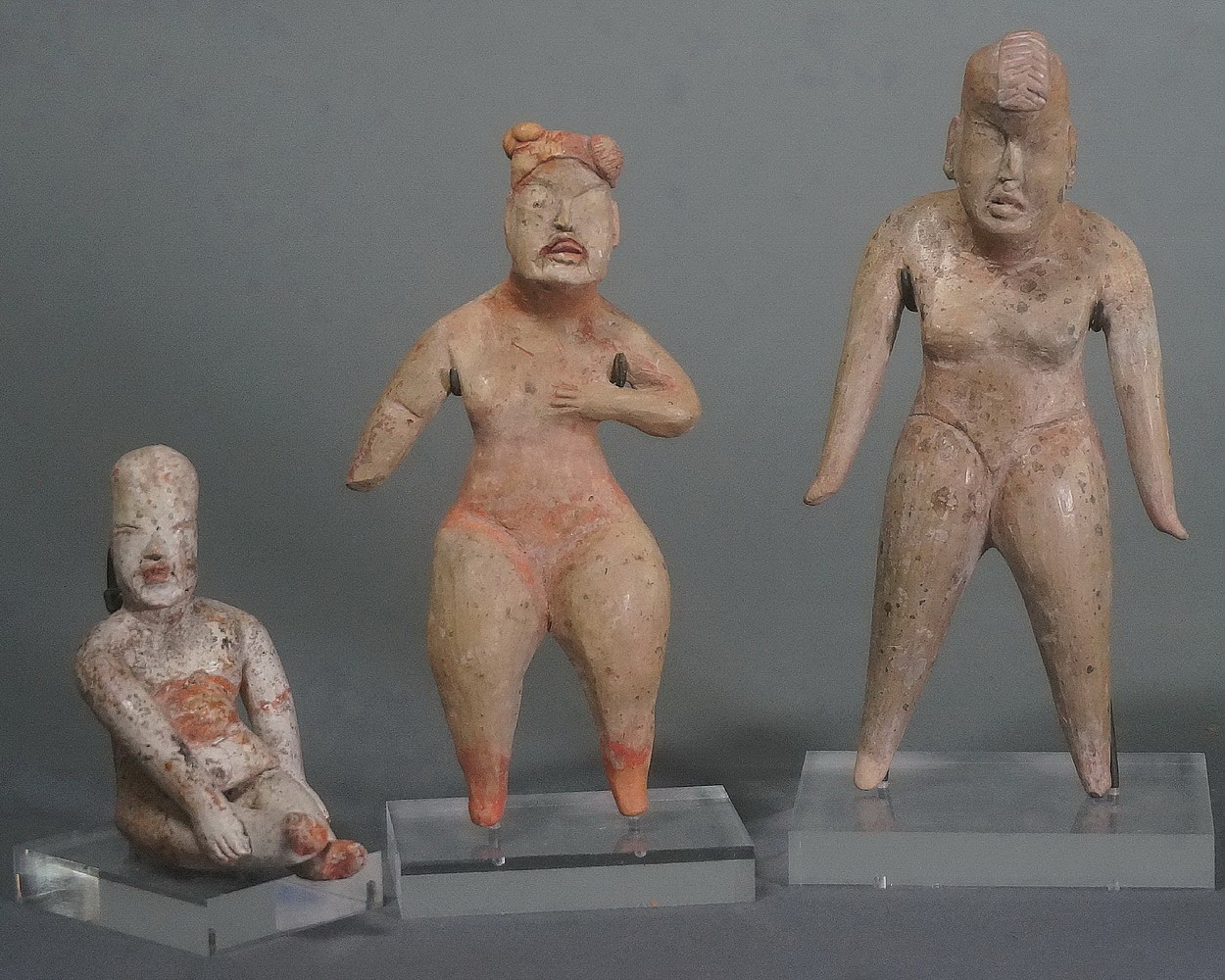






Mexico, Set of 3 Olmec Ceramic Figurines
These three figurines were exhibited together at Taguchi Fine Art in Tokyo and are illustrated in “JAGUAR'S CHILDREN: The Art of The Olmec,†May 7 - June 30, 2007. From left to right: seated cross-legged female with kaolin and cinnabar, standing eyeless female figure with traces of cinnabar, and standing figure with traces of kaolin slip.
Period: Mexico, Olmec, Las Bocas, Puebla c. 900 - 600B.C.
Media: Ceramic
Dimensions: Height: 6.9 cm, 12 cm, and 13 cm.
Price Upon Request
n7064




